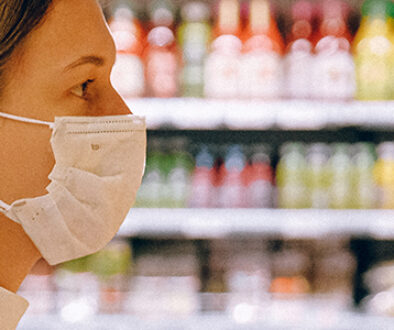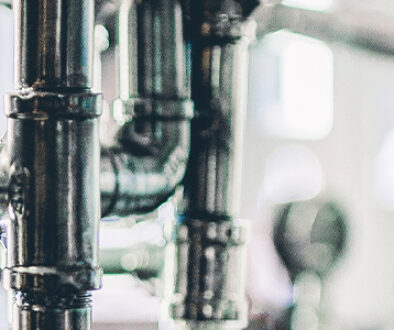The Pros and Cons of High-Heat Treatments
Historically, raw milk was used for cheesemaking. Apart from the increased risk of foodborne illness, there also was more variation in cheese quality. Today, most milk for cheesemaking is pasteurized at a minimum of 161 degrees Fahrenheit for 15 seconds to kill all pathogens. Pasteurized milk helps us produce more consistent cheese, but it certainly is not sterile; some heat-tolerant spoilage bacteria (thermoduric bacteria) might still be present because they can survive pasteurization.
Take the heat
If spoilage bacteria become an issue in a cheese, then the cheesemaker can try to reduce the initial numbers of these bacteria in the raw milk by having better sanitation or using techniques to physically remove more bacteria. Another option is to increase the temperature of the heat treatment to try to destroy some of these bacteria. However, one of the major impacts of high-heat treatments, which are generally above 167 degrees Fahrenheit, is the denaturation of whey proteins.
When whey proteins are denatured, they form permanent disulfide (S-S) bonds mostly with the casein particles in the milk. Whey denaturation negatively impacts the renneting process, producing slower clotting and softer, more fragile gels. Increasing the amount of denatured whey proteins also results in several changes to the final cheese product, including a higher moisture content, cheese with less flow (melt), mealy texture and poor fusion between curds.
Several types of cheeses, including queso Blanco and ricotta, require high-heat treatments, and these characteristics are desirable in those cheeses. In these fresh cheeses, very hot or boiling milk is acidified, creating cheeses that do not melt and are high in moisture.
Back in the 1980s, when whey was not as valuable, there was a lot of interest in using high-heat treatment of the milk to increase cheese yield, since the denatured whey proteins are retained in the cheese. Over the last 30 to 40 years, the whey industry has become very sophisticated and has created many value-added products from the whey stream.
Consider the benefits
Still, there are instances today when the use of high-heat-treated milk is beneficial. For instance, cheesemakers often subject the bulk starter culture media or secondary starter culture (often prepared from milk or dairy ingredients) to a high-heat treatment for use as a growth medium in the cheesemaking process. These types of starter media, or secondary starter preparations, also help increase cheese yield as they elevate the total solids content of the cheese milk, as well as boost the moisture content of the cheese.
Here at the Center for Dairy Research, we have used high-heat treatment of milk to try to slow down some of the enzymatic activities that occur during cheese ripening. For example, we utilized high-heat treatment when developing a flavored string cheese; it helped extend the length of time that the added flavors held up in the cheese.
We also used high-heat treatment of cheese milk to try to slow down the breakdown of natural cheese that was destined for use as a base in process cheese.
High-heat treatment also is used by some cheese plants in a process called microparticulation. This process involves concentrating the whey, subjecting it to high heat and then shearing it. The treated whey is then added back into the milk for use as a fat replacer or to boost yields.
When considering the use of high-heat treatment in cheesemaking, plants need to take into account the pros, including increased cheese yield, and the cons, including a possible negative impact on the whey stream. If the plant is using its whey for high-value ingredients, high-heat treatments may not be a good option. Still, high-heat treatment is an important tool that cheesemakers have at their disposal to attain certain characteristics in cheese, as well as to optimize yield.
Source: Dairy Foods




